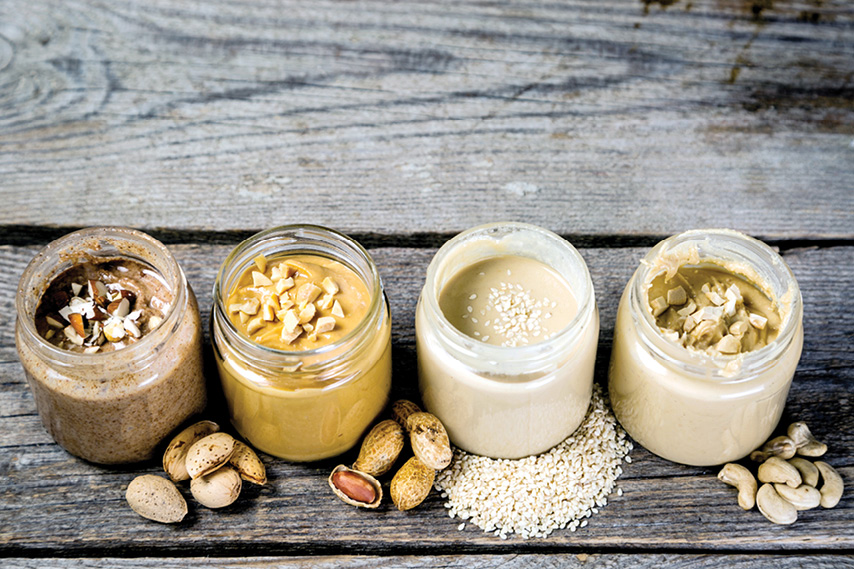With health fads and conscious food choices gaining momentum, the food industry is witnessing a renaissance of sorts. From celebrity-endorsed “superfoods” to “alt-foods” catering to health movements, these disrupters are paving the way for a trend that Foodhall, Future Group’s premium lifestyle food superstore launched in May 2011, terms “The rise of the alternative”.
The emergence of a conscious eating culture along with the availability of information affects how we gaze, choose and involve ourselves with the food we consume. It’s an integration of our nutritional needs with the philosophy of our consumption. The following product lines are regarded by Foodhall to be the current pioneers contributing to the rise of the “alternative” in supermarket shelves.
NON-MILK MILKS
Heading veganism and other cruelty-free trends are affecting the sales of animal-derived milk and other such dairy products. The alternative offered is soy and almond milk, along with other plant-sourced products. Even as the abovementioned products have undergone an image makeover by the association to the modern concept of clean eating, these milks are not novel. Oriental white gold, also known as soy milk, has been the reigning Sino-superfood since the 14th century, most commonly consumed as tofu. As far as food microhistories go, the earliest written mention of almond milk appears in a Baghdadi cookbook circa 1226.
The alt-milk market is an evolving one, as the status quo is being disturbed by new players on the field. Jumping on the milk bandwagon, cashew, walnut and pistachio are popular entrants into the nut milk portfolio, with myriad applications in sweet and savoury preparations. However, the coolest kid on the block is the inimitable oat milk. Lacking the allergens found in nuts, with a neutral flavor and creamy texture, oat milk is the best alternative to cow milk.

THE RENAISSANCE OF ANCIENT GRAINS
Local is making a comeback as the trend of consuming organic, locally-sourced and indigenous diet is witnessing an upsurge. At Foodhall, we have imbibed the plant-forward trend with our ancient grains that double as alternative grains too. Augmented with protein, flavor, and texture and some options being naturally gluten-free and vegan-friendly, it’s no wonder that grains like quinoa, barley, jowar (sorghum), bajra (millets), amaranth, oats, teff, buckwheat, raagi (finger millet) provide appeal beyond trends, and are consistently featured in many consumer-led health choices against common staples.
With an increasing demographic shying away from traditional offerings, snacks made from alternative grains are soaring in popularity while alternative flours are being made more accessible. Alternative flour sales have grown by 40% over the last year, and the numbers are expected to soar in 2020.
Departing from the traditional thought of flours milled from grains, Cauliflower flour is notable faux flour. With its impressive nutritional profile and mild taste, Cauli-flour makes for a great alternative to grain-based staples.
DON’T DEMONISE SUGAR; REINVENT IT
Big Agriculture and nutritional science have been replaced with the microcosm of curated food experiences that resonate today’s lifestyle choices. At Foodhall, we’re undertaking initiatives to expand on the idea of native food. In Indian context, the rising popularity of jaggery as an alternative to synthetic sugar is a proof of how the consumers are seeking out ancient food practices to re-invent their eating habits. Jaggery, the super-food sweetener, has been mentioned in Ayurveda for benefits such as cleansing of the lungs; purification of the esophagus, intestines and blood; slow absorption; vitamins and mineral-rich acid balance among others.
Western imports like monkfruit and pomegranate molasses have also been gaining momentum, in view of a conscious migration from artificial sugar agents.
Better Butters
Aside from the plant milk fad, the Indian gourmand has also developed a new fondness for ‘eating for longevity’. This is why nut butters, supported by a plethora of food technologists and enthusiasts the world over are being recognised as an alternative to common dairy butter. They are tastier, healthier, and do not solidify easily upon refrigeration.
These alt-butters are especially good for those with lactose-intolerance, who want another dairy-free source of rich protein with good fat content. The monounsaturated fatty acids (MUFA) and polyunsaturated fatty acids (PUFA) in nut butters make these tasty spreads relatively healthy too.
Even as nut butters are gaining traction and loyalists due to their health benefits, the future of this category lies in the dawn of seed butters such as sunflower, pumpkin and the already popular tahini, made from sesame seeds.
The author is head of FMCG, Staples and Dairy, Foodhall

